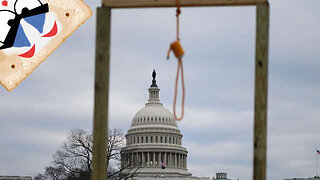Premium Only Content

A History of the 14 Coups Led by the United States - Not Always to its Own Benefit (2006)
A historical analysis of how the United States has overthrown foreign governments over the course of more than a century, starting in the late 19th century with Hawaii and continuing through to Iraq in the early 21st century. The book covers the motivations, methods, and consequences of these interventions, providing a critical view of American foreign policy.
Key Themes and Periods
Economic and Strategic Interests:
Kinzer argues that most of the U.S.-led regime changes were motivated by economic interests, particularly the desire to control resources like sugar in Hawaii, bananas in Central America, or oil in the Middle East. Strategic concerns, such as the desire to counter rivals or protect American businesses, were also significant.
Early Examples: Hawaii and the Caribbean:
The book begins with the overthrow of the Hawaiian monarchy in 1893, driven by American sugar planters and supported by U.S. military forces. This set a precedent for future interventions. Kinzer also discusses interventions in Cuba, Puerto Rico, and the Philippines following the Spanish-American War.
The "Banana Republics":
In the early 20th century, U.S. interventions in Central America and the Caribbean, such as those in Nicaragua, Honduras, and Guatemala, were largely driven by the interests of American corporations like the United Fruit Company. These interventions established the term "banana republics" and showed the U.S. willingness to use military force to protect its economic interests.
Cold War Era:
During the Cold War, U.S. regime change efforts were often justified by the need to combat communism. Kinzer discusses cases such as the CIA-led coups in Iran (1953) and Guatemala (1954), the Bay of Pigs invasion in Cuba (1961), and the intervention in Chile (1973). These actions were often framed as necessary to prevent Soviet influence but had long-lasting negative impacts on the affected countries.
Late 20th Century and Beyond:
The book also covers more recent interventions, such as the invasions of Grenada (1983) and Panama (1989), the Gulf War (1991), and the Iraq War (2003). These later interventions are shown to be part of a continuing pattern of American interventionism, often with disastrous results for the targeted countries and for U.S. interests in the long term.
-
 48:39
48:39
The Memory Hole
11 months agoOperation Gladio Part 3: CIA, MI6, Subversive Activities & False Flag Operations
1.62K4 -
 32:24
32:24
Forrest Galante
1 day agoHunting and Eating The World's WORST Fish (Everglades At Night)
120K8 -
 11:37
11:37
The Pascal Show
1 day ago $12.18 earnedTHEY WANT TO END HER?! Candace Owens Claims French President & First Lady Put A H*t Out On Her?!
38.1K44 -
 LIVE
LIVE
Lofi Girl
3 years agolofi hip hop radio 📚 - beats to relax/study to
138 watching -
 35:40
35:40
The Why Files
4 days agoPsyops: From Dead Babies to UFOs - The Same Pattern Every Time
90.9K102 -
 1:48:26
1:48:26
Tucker Carlson
2 days agoKristen Breitweiser: 9-11 Cover-Ups, Building 7, and the Billion-Dollar Scam to Steal From Victims
174K396 -
 5:48
5:48
Russell Brand
2 days agoThey BURNED me in effigy!
59.8K39 -
 1:21:40
1:21:40
Man in America
7 hours agoThe Secret AI Plan to Enslave Humanity — And Why It Will FAIL w/ Todd Callender
45.3K19 -
 2:18:17
2:18:17
TheSaltyCracker
7 hours agoTreason Season ReeEEStream 11-23-25
153K217 -
 3:10:33
3:10:33
Badlands Media
1 day agoThe Narrative Ep. 47: Arctic Alliance
64K8